The most massive trolley world
 Bashny.Net
Bashny.Net
At the word "trolley" all the inhabitants of the former USSR (except residents of Kiev, the Crimea and some cities in Western Ukraine), and not only them, it pops up in my head this machine.
The most mass model in the world - more than 45 thousand trolleys in various versions and modifications. Design decisions that determined the transport "fashion" for many decades to come. Developments on the verge of primitiveness, but proven as the most optimal - repairable and tenacious.
ZiU-682. How trolley created the most massive of all time?
50 photos
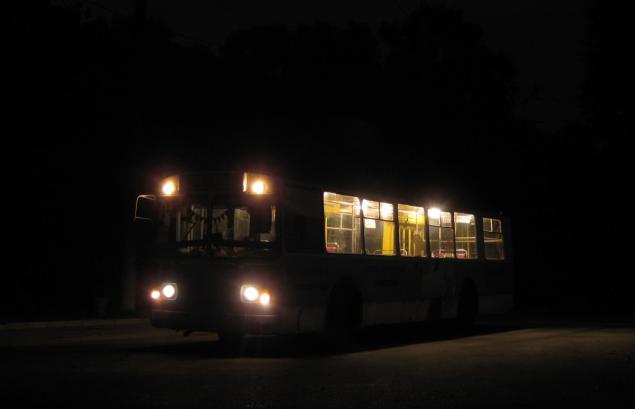
ZiU-682 (ZiU-9) - Soviet, and later Russian high-capacity trolley. Commercially produced in Engels in Plant Uritsky ("TrolZa") since 1972. For more than 40 years of serial production created several dozen modifications adapted to operate in different environments. Total produced more than 45 thousand trolleybuses ZiU-682, and technical solutions were the basis of other models of trolleybuses (ACSM-101 Nizhtroll etc.). ZiU-682 trolleybuses operate without exaggeration all around the world - from South America to Europe, Asia and the Far East.
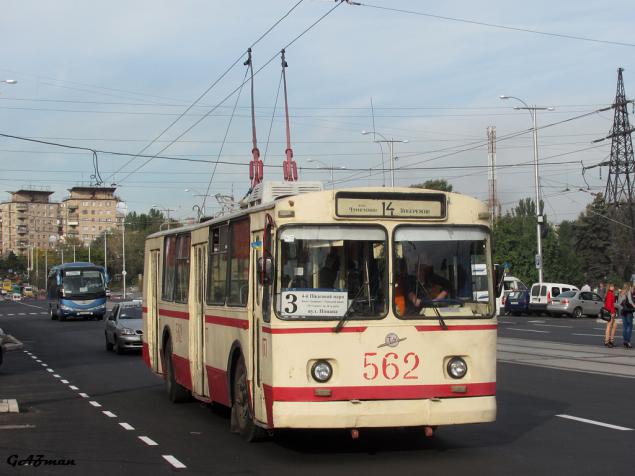
1. Background, development. The first copies ZiU-9A ZiU-682B.
In the mid-1960s it became clear that the machine ZiU-5 is morally and technically outdated. The old two-door car can not cope with passenger traffic. Experiments have been conducted on the "plunging" middle door. so in the 1966-1967 year came ZiU-5E created in a single prototype
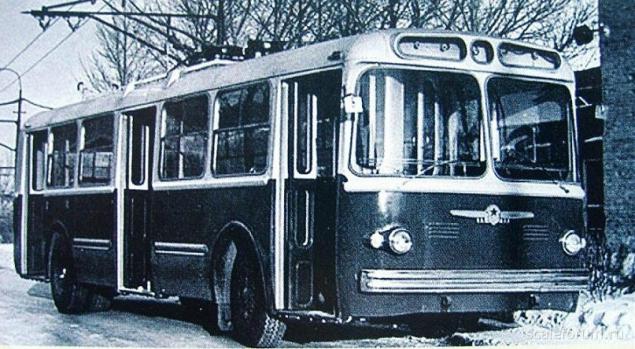
In 1965 the factory Uritsky begun development of a new trolley - ZiU-9.
The first machine ZiU-9 was built in 1966. New trolley got trendy rectangular body. On the roof on the right side has a large destination sign.
To improve visibility from the driver seat, as well as reducing the load on the front axle front door has been narrowed in half. And in general - the arrangement adopted in this machine has become a classic.

Initially, the trolley was white with red stripes, but about in 1968 was repainted on a "red bottom - white top." Then it was removed some "excesses" like the destination sign.
In 1968, the trolley arrived in Moscow for tests, where he received a number of 5000 trolleybus worked on route 24 to the early 70-ies. The advent of new technology on the routes of the capital caused a furor among Muscovites - so much new trolleybus was different from the usual techniques.

In 1968, the same year was released ZiU-9A №5001. From the following instances, like the first, it is distinguished by body width (2680mm). The trolleybus was similar to the 5000 design and was tested at 24 from Moscow.

New trolley got a brand new "fashionable" rectangular body, wide rear doors and the average and twice already - front. On the back of the site was created by a large drive, located on level one step lower than the floor of the cabin. Lowering the level of the floor it was carried out with the help of an inclined ramp (similar buses LIAZ-677). It was used a lot of new technical solutions, such as air suspension, using jet thrust instead of spring / pnevmoressornoy.
Photo: Extreme right - ZiU-9 sample in 1966 (left) and ZiU 9A-1968 sample. (right). Well see the difference in width (2500mm at ZiU-9 against 2680mm at ZiU-9A. Photo ~ 1968-1969gg.)
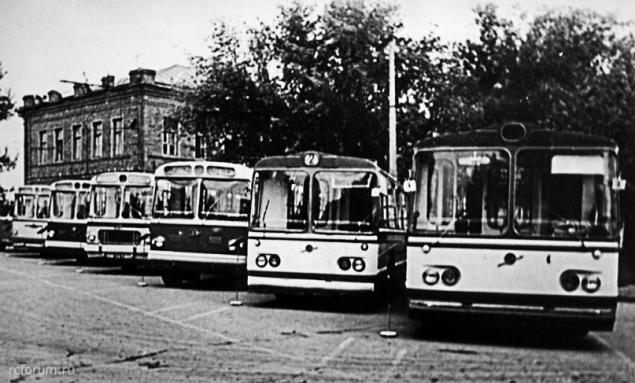
Trolleybus ZiU-9 and 9A ZiU-tested in Moscow in 1968-1969. According to test results has been selected ZiU-9 with a standard width of the body, and in 1970 was released two trolley ZiU-9, had a body that was the basis for all subsequent models and modifications ZiU-9.

According to test results in the machine have been made to both external and internal changes. According to unconfirmed information, there are two more prototypes 1971g.v., Looks virtually identical to the serial ZiU-682B.
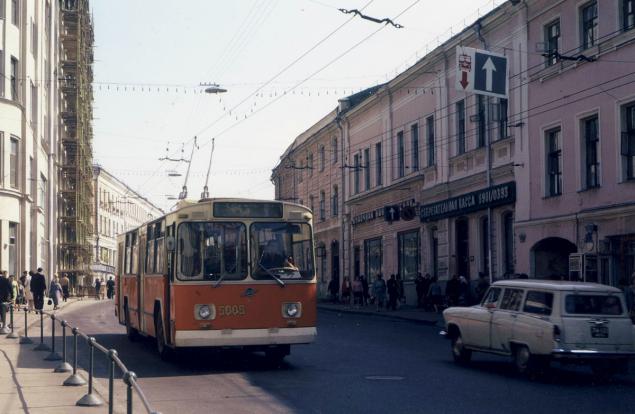
Already in 1972, under the symbol trolley ZiU-682B dispersed throughout the Soviet Union.
The main disadvantages of the model was considered inconvenient front door and a loud noise from the motor-generator. Furthermore, condemned heating system interior from the hot air from the air cooling system unit start-brake resistors. If in the middle of the cabin was quite warm (and sometimes literally heats metal parts), the temperature at the back of the site was close to the street.
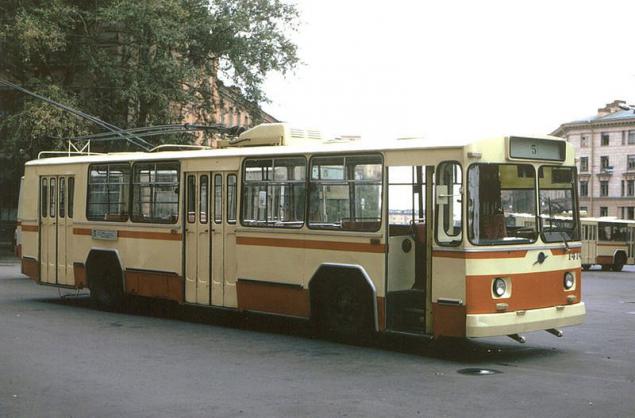
On the new trolley mounted engines DK-207, and from 1973 - DK210. Rear axle was pnevmoressornoy, front - with pneumatic rotary torque rods.
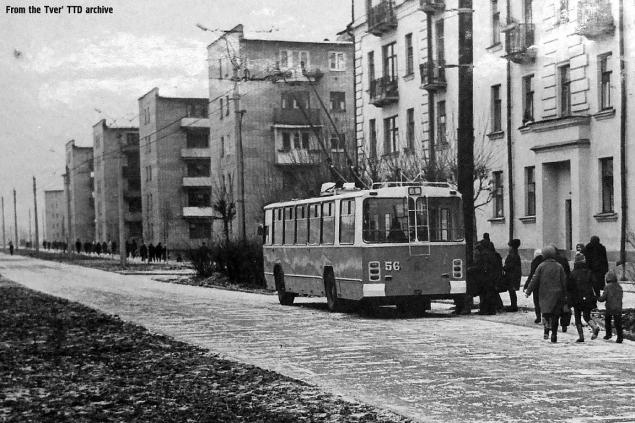
Manufacturing trolley ZiU-682B only lasted three years - from 1972 to 1975.
During this time it produced about 8000 trolleybuses admitted to most of the cities of the USSR and even in Helsinki.

In 1974 there were the first external changes - angular wheel arches were replaced by rounded. In addition, last ZiU-682B disappeared additional rear lights red, set at the lower edge of the main lighting, but was a little closer to the center of the stern.
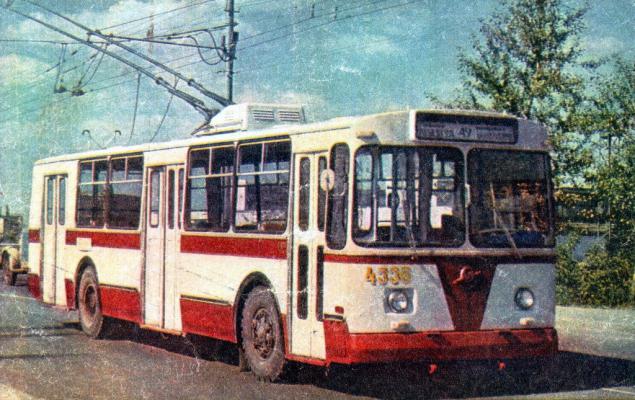
2. ZiU-682V
With minor modifications (in particular, the replacement of the front axle on pnevmoressornuyu) in 1975 was replaced by a new model - ZiU-682V. This factory continued numbering ZiU-682B. This model was to become the most massive trolley bus; ZiU-682V and modification work to this day in many parts of the world - from the former Soviet Union to Argentina and Greece.
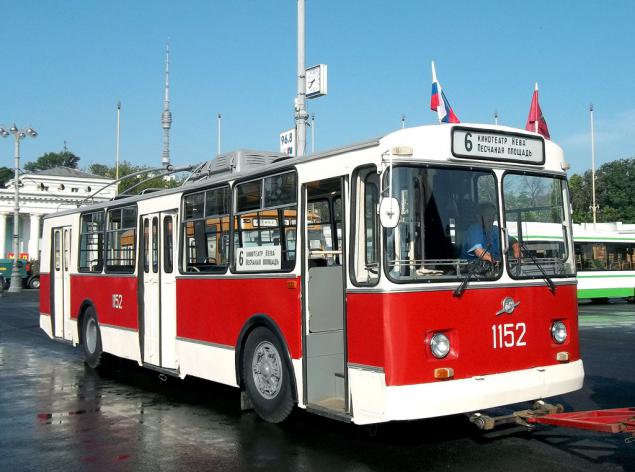
Modifications ZiU-682V:
ZiU-682V (HTI 682V00)
Machines of this modification were issued in 1975-1989, respectively. During serial production they are transformed several times:
in 1978 redesigned footpegs under the stairs at the rear
in 1978 he disappeared 1st hatch in the saloon and hatch in the cockpit
in 1978 there were shtangouloviteli
in 1980 changed the location of air vents (they are now mounted in each second window, and not in each)
in 1983 changed the upper marker lights (instead of "eyebrows" set new rectangular lights), raised the level of the rear platform
in 1985, updated lighting fixtures - instead of the front, rear and side "boats" installed new square lanterns.
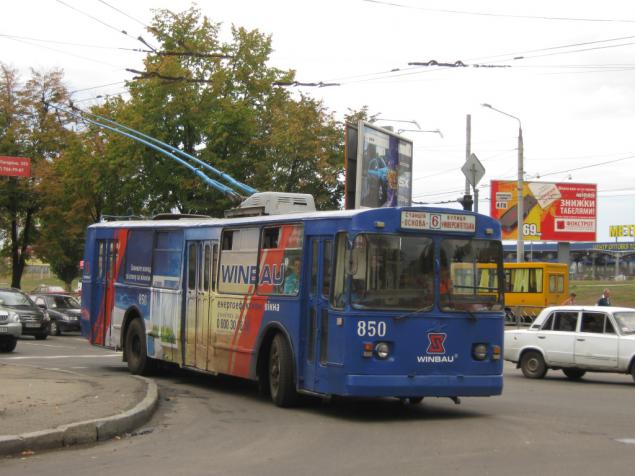
ZiU-682V0A (HTI 682V012)
This version was produced in 1988-1990. From cars ZiU-682V00 they differed new engine - the DC-213 power 115kW. At the same time it has been removed from the speaker of the cab.
In 1989, trolley buses began to establish new housing radioreaktorov - flat with sharp edges. Then the power steering has been changed - now the pump is closer to the left side and fill the oil made from the street, not from the cabin.
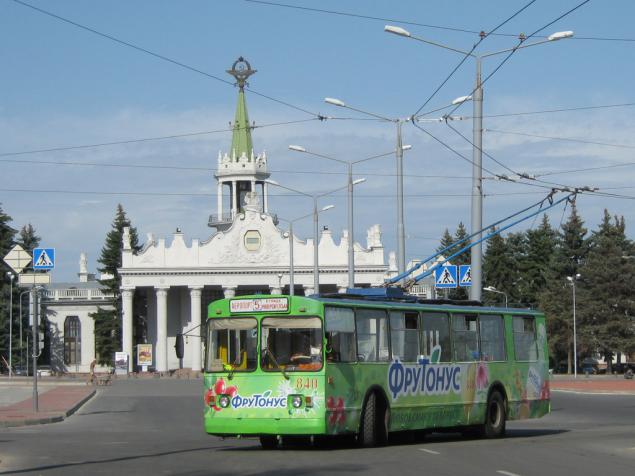
ZiU-682V0V (HTI 682V013)
These trolleybuses were produced just less than a year - from mid-1990 to January 1991. From cars ZiU-682V0A different pneumatic doors.
ZiU-682V10 (HTI 682V10)
ZiU-682V1 (HTI 682V10) are "mountain" version ZiU-682V and equipped with a capacity of 150kW Ted. Another feature of early ZiU-682V1 is a braking system - in which 4 brake position. This often leads to driver error, because these machines left pedal would trigger GRK to braking mode, and already would trigger the right position. Later the control of the braking position has been rescheduled for the left pedal. The only external difference between these machines - before the middle door there is an additional maintenance hatch for maintenance and additional ventilation unit PTR. Depending on the model year cars also get different lighting fixtures, floor level, etc., and these changes were carried out in parallel on the model ** and B10. Despite this, the car did not differ on the B10 B1A and B1B. The factory was carried out in a separate numbering series
(on the photo - "mountain" 682V1 sample 1985-1989.)

There were also a few modifications ZiU-682V: ZiU-682S, ZiU-682F, as well as the export version.
ZiU-682S (HTI682S00) is the "North" option ZiU-682V. The machine was created in 1980 and is equipped with additional thermal insulation and heater, double glass windows and hatches, thus able to operate at temperatures up to -60 degrees. Factory separate numbering. It's funny that one of these machines (zav.6, 1986g.v.) Somehow ended up in Odessa ...
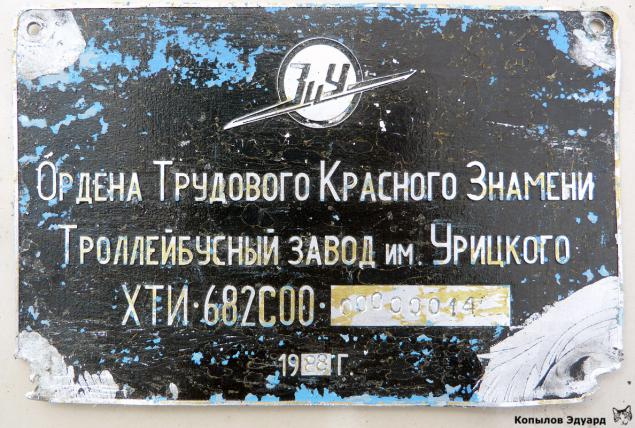
Some trolleybuses exported in 70-80 years beyond the USSR, had separate designations modifications:
ZiU-682UA (1980-1988) - Argentina, Kazakhstan
ZiU-682UV (1976-1987) - Hungary
ZiU-682UP (1981-1986g.v.) - Poland, Bulgaria
ZiU-682UYU / ZiU-682YU10 (mountain) (1979-1985) - Yugoslavia
ZiU-682UG - Greece
ZiU-682TV (1985) - Colombia
In the photo - ZiU-682UV
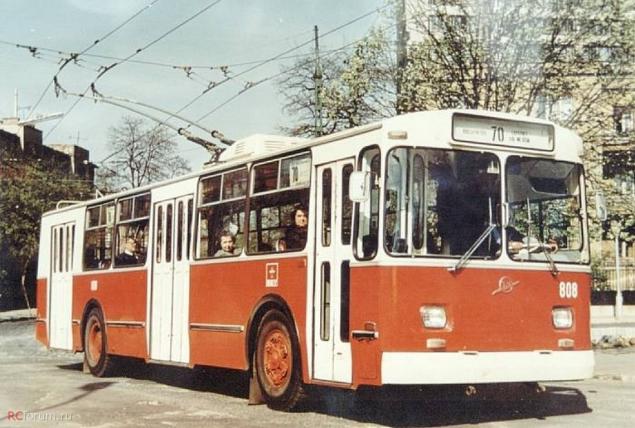
These cars were different from the usual - so, in the trolley for Greece on nadkolёsnyh seats cupolas placed sideways in some trim missing cockpit bulkhead, installed lighting fixtures, etc. The modified
(photo - ZiU-682UYU)
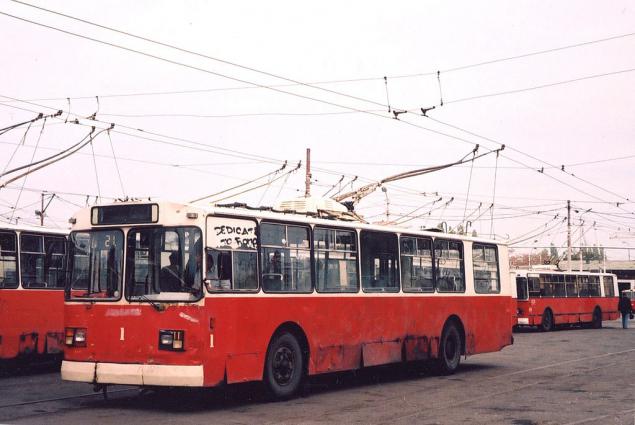
But looks like salon ZiU-682 destined for Greece. Features native Soviet workaholic is not immediately recognizable - Greece staged other vents, instead of hatches in the ceiling - fans. Seats are in accordance with Greek standards
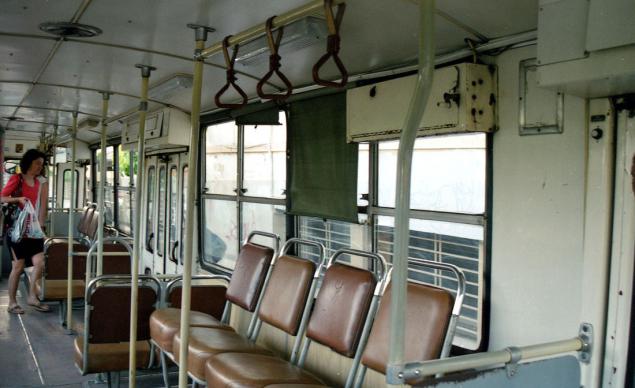
Moreover, especially for India factory Uritsky gathered ZiU-682V is designed for use on roads with left-hand traffic.
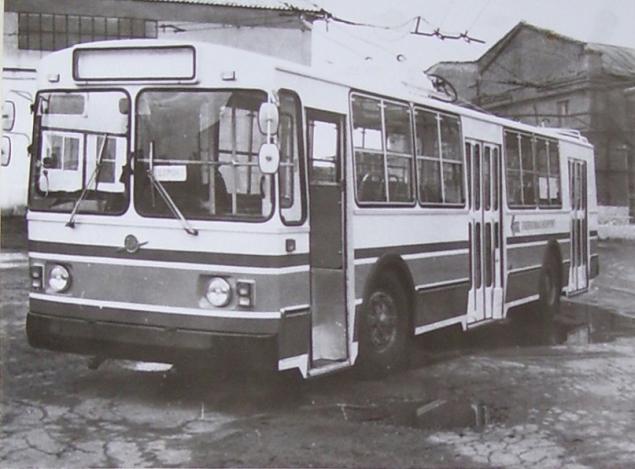
ZiU-684 was equipped with thyristor-width control system. It was released just two cars in 1983, they have worked in Moscow, №№5839-5838, later 1264-1265) before the end of the 1980s. Their fate is unknown. These trolleybuses were applied some solutions used in the future when creating ZiU-682G, such as new seats and interior layout 2 + 1 at the same time which single seat for ease of cleaning the floor is cantilevered. There was a higher level of the floor at the rear of the site, so the floor became even along the entire length of the cabin.
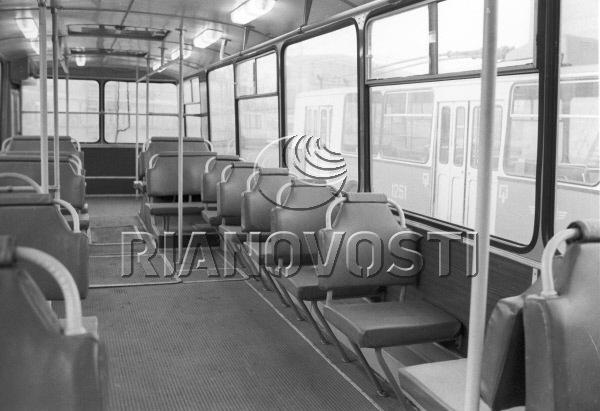
Trolleybus ZiU-682V were removed from the production of just 1 February 1991, giving way to a more comfortable and modern, but far less reliable modification ZiU-682G00. Over 25 years of serial production was released about 37 thousand vehicles ZiU-682V (for example, in Kharkov is a machine with a serial number 00036767, is a machine 879), and is the undisputed leader of the production of the most massive trolley of all time.
About the reliability of these machines can compose legends. Can you imagine the trolley here in this disaster?

And even such pits our workaholic no obstacle ...
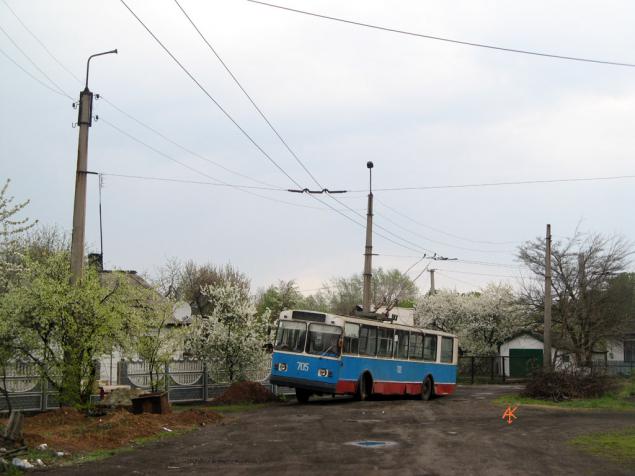
3. ZiU-682G and prior development
In the late 1980s it became clear that the trolley ZiU-682V is already outdated. It was then instructed to begin the development of a new model trolley. Develops many interesting cars, for example ZiU-5257 development ZiU or ZiU-6202, developed by the Lviv VKEIA in 1985. Both were built in the trolley body LiAZ 5256.
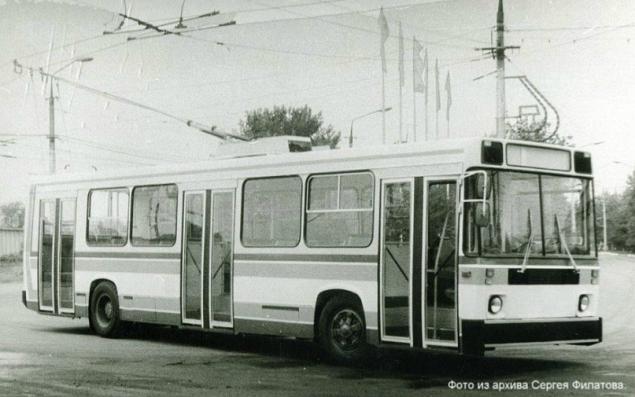
We know of the existence of a single instance ZiU-5257 (tested in Engels) and two ZiU-6202 (tested in Lviv). Of course, the emergence of such trolleybuses in series production have completely changed the course of history of domestic trolleybusostroeniya since Classic body ZiU-9 would have remained in the depths of history, and was the basis for the majority of domestic trolley for another two decades. However, for various reasons, from the start of series production of new cars declined, and further development of the model range has gone on the most simple way - to modernize the existing ZiU-682.
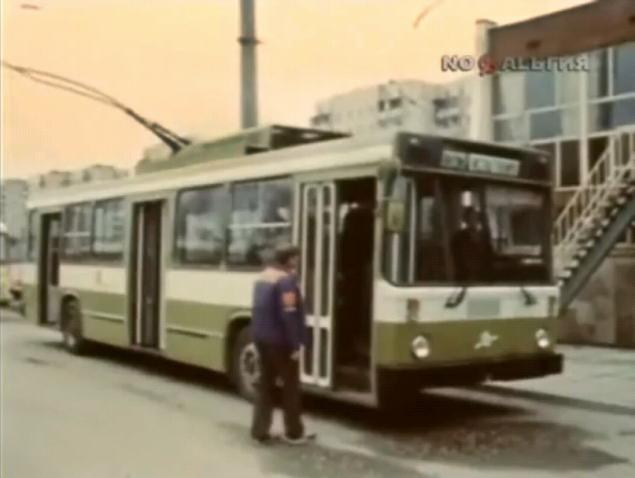
In 1990, the "new" trolley ZiU-682G00 has been demonstrated. Compared with ZiU-682V changes were:
Cabin - on the left side set single seats, seat backs another, more convenient form
Dashboard - All switches, except for doors and windshield wipers moved to the left panel under the window. By the way, this panel is set still
a cabin door widened twice
changed tracing high-voltage cable on the roof
Front, under the front, set the air intake heating system
change the design of the power components of the body
February 1, 1991 the trolleybus was put on the conveyor. Factory numbering started with the number 1 and continued until 2009, with some exceptions (see below). The main disadvantage of this trolleybus called lightweight frame. Because of this, the machine ZiU-682G00 began to write off at the end of the 90s, after the deformation of the frame occurred rather quickly. There are cases when the older ZiU-682V experienced most G00.

4. Modifications ZiU-682G 1990s. development and their modern versions
1990 long remembered by our countrymen. The crisis has affected all spheres of activity, including public transport. The first Plant Uritsky, who did not know until now competition, had to adjust to the demands of the market, in order to get at least the minimum-orders. Then, in the production have been launched such modifications known model ZiU-682G00:
ZiU-682GN. Educational version with embroidered cabin and instructor. Factory total numbering series.
ZiU-682G10. Mountain version. It equipped with a traction motor power 175kW. Factory numbering separate
ZiU-682G-012 (XTU682G0A). The release of these machines was started in 1993, and they are not much different from its predecessor. Just 1993-01.2003 was released about a thousand trolleybuses. The default numbering series common
ZiU-682G-013 (XTU682GK). In 1997-2000, it was released only 13 such trolleybuses. They differed tinted windows and air vents in each box, and the insulation monitoring device and pneumatic system upgraded. The default numbering series common
ZiU-682G-014 (XTU682G0E). In 1998-2000, it was released about a hundred of these trolleys. They were fitted with tinted windows with panes in each window. The default numbering series common
ZiU-682G-015 (XTU682G0L). Fired just 6 of trolleybuses in 1997-1998. All of them arrived in Krasnodar. These machines were first established separate seats and a new layout of the cabin (on the left side on the floor there are 4 rows of seats instead of five, with two rows - double seat and two - single). The default numbering series common
ZiU-682G-016 (XTU682G0M). This version was created in 1999 and later became a base. It was carried out a thorough anti-corrosion treatment of the body, and is now established usual security - blocking progress in public, travel stops rods, USP, and more. The default numbering series common
ZiU-682G-017 (XTU682G0N). In 2000-2003, it was released a little more than 50 trolley that model. Almost all electrical equipment (GRK, PTR and speed switch) was made in the roof. Factory numbering separate
ZiU-682G-018 (XTU682G0R). About 150 trolleybuses of this model were produced in 2001-2003 and 2006-2007. In fact, they are no different from the T-016, but noisy motor-generator feeding NEC, has been replaced by a modern static voltage converter. The default numbering series common
ZiU-682GP. ZiU-682G-012, issued in 1997-1999 and equipped with a plastic mask on the front trolley Trolza-5264.02 "Capital". It was released just six of these machines, which went to Moscow and worked up to 2004-2009 ... The default numbering series common
(pictured - ZiU-682GP)

Since 2002, the model ZiU-682G-016 is taken as the base. Thus, regardless of the body undertook ordered, ZiU-682G-016, which leads to customer requirements. At the same time on the name plate indicates the model XTU682G0M, and the trolley got a double index, where the second part meant a complete set. For example, trolleys, arrived in Kharkov in 2002, have a double index ZiU-682G-016 (012), which stands for: "The body ZiU-682G-016, the assembly is simplified to ZiU-682G-012»
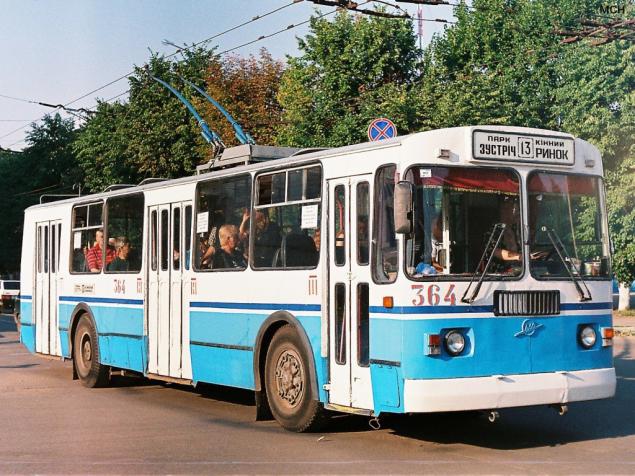
Since 2002, the modification of the 1990s in the development pipeline remained following models:
ZiU-682G-016 (012)
ZiU-682G-016 (017)
ZiU-682G-016 (018)
Moreover, since 2005, these machines can be installed on a plastic mask frontal ZiU-682G-016.02. In this case, the index is added to the letter P, for example ZiU-682G-016 (018) n.
Since 2009, modifications to the trolley 016 (012) and 016 (018) plastic frontal mask is set to fail. This trolley got a new index ZiU-682G-016.05 and a new factory numbering (with №1).

5. Modifications ZiU-682G 2000s. design and their modern counterparts
ZiU-682G-016.02 - the next stage of development of the cult 682nd model. This version is available from October 2002. It differs from the previous removal of electrical equipment on the roof and in a special compartment located behind the driver, on the left front dome. The handbrake was the air with using of energy; motor-generator feeding NEC, replaced by a static voltage converter.
Interior lighting of the passenger area is carried out by fluorescent lamps, having modes of full, partial and emergency lighting. In addition, installing a new plastic frontal mask and planetary system ANTI-door and locking stroke with open doors.

Since 2004, the Affordable Modification 016.03 - to the supporting structure of the body of an open channel, which significantly increases the service life of the trolleybus. The rest of the 016.02 / 016.03 do not differ from the basic version of the 012th.
Source:
The most mass model in the world - more than 45 thousand trolleys in various versions and modifications. Design decisions that determined the transport "fashion" for many decades to come. Developments on the verge of primitiveness, but proven as the most optimal - repairable and tenacious.
ZiU-682. How trolley created the most massive of all time?
50 photos

ZiU-682 (ZiU-9) - Soviet, and later Russian high-capacity trolley. Commercially produced in Engels in Plant Uritsky ("TrolZa") since 1972. For more than 40 years of serial production created several dozen modifications adapted to operate in different environments. Total produced more than 45 thousand trolleybuses ZiU-682, and technical solutions were the basis of other models of trolleybuses (ACSM-101 Nizhtroll etc.). ZiU-682 trolleybuses operate without exaggeration all around the world - from South America to Europe, Asia and the Far East.

1. Background, development. The first copies ZiU-9A ZiU-682B.
In the mid-1960s it became clear that the machine ZiU-5 is morally and technically outdated. The old two-door car can not cope with passenger traffic. Experiments have been conducted on the "plunging" middle door. so in the 1966-1967 year came ZiU-5E created in a single prototype

In 1965 the factory Uritsky begun development of a new trolley - ZiU-9.
The first machine ZiU-9 was built in 1966. New trolley got trendy rectangular body. On the roof on the right side has a large destination sign.
To improve visibility from the driver seat, as well as reducing the load on the front axle front door has been narrowed in half. And in general - the arrangement adopted in this machine has become a classic.

Initially, the trolley was white with red stripes, but about in 1968 was repainted on a "red bottom - white top." Then it was removed some "excesses" like the destination sign.
In 1968, the trolley arrived in Moscow for tests, where he received a number of 5000 trolleybus worked on route 24 to the early 70-ies. The advent of new technology on the routes of the capital caused a furor among Muscovites - so much new trolleybus was different from the usual techniques.

In 1968, the same year was released ZiU-9A №5001. From the following instances, like the first, it is distinguished by body width (2680mm). The trolleybus was similar to the 5000 design and was tested at 24 from Moscow.

New trolley got a brand new "fashionable" rectangular body, wide rear doors and the average and twice already - front. On the back of the site was created by a large drive, located on level one step lower than the floor of the cabin. Lowering the level of the floor it was carried out with the help of an inclined ramp (similar buses LIAZ-677). It was used a lot of new technical solutions, such as air suspension, using jet thrust instead of spring / pnevmoressornoy.
Photo: Extreme right - ZiU-9 sample in 1966 (left) and ZiU 9A-1968 sample. (right). Well see the difference in width (2500mm at ZiU-9 against 2680mm at ZiU-9A. Photo ~ 1968-1969gg.)

Trolleybus ZiU-9 and 9A ZiU-tested in Moscow in 1968-1969. According to test results has been selected ZiU-9 with a standard width of the body, and in 1970 was released two trolley ZiU-9, had a body that was the basis for all subsequent models and modifications ZiU-9.

According to test results in the machine have been made to both external and internal changes. According to unconfirmed information, there are two more prototypes 1971g.v., Looks virtually identical to the serial ZiU-682B.

Already in 1972, under the symbol trolley ZiU-682B dispersed throughout the Soviet Union.
The main disadvantages of the model was considered inconvenient front door and a loud noise from the motor-generator. Furthermore, condemned heating system interior from the hot air from the air cooling system unit start-brake resistors. If in the middle of the cabin was quite warm (and sometimes literally heats metal parts), the temperature at the back of the site was close to the street.

On the new trolley mounted engines DK-207, and from 1973 - DK210. Rear axle was pnevmoressornoy, front - with pneumatic rotary torque rods.

Manufacturing trolley ZiU-682B only lasted three years - from 1972 to 1975.
During this time it produced about 8000 trolleybuses admitted to most of the cities of the USSR and even in Helsinki.

In 1974 there were the first external changes - angular wheel arches were replaced by rounded. In addition, last ZiU-682B disappeared additional rear lights red, set at the lower edge of the main lighting, but was a little closer to the center of the stern.

2. ZiU-682V
With minor modifications (in particular, the replacement of the front axle on pnevmoressornuyu) in 1975 was replaced by a new model - ZiU-682V. This factory continued numbering ZiU-682B. This model was to become the most massive trolley bus; ZiU-682V and modification work to this day in many parts of the world - from the former Soviet Union to Argentina and Greece.

Modifications ZiU-682V:
ZiU-682V (HTI 682V00)
Machines of this modification were issued in 1975-1989, respectively. During serial production they are transformed several times:
in 1978 redesigned footpegs under the stairs at the rear
in 1978 he disappeared 1st hatch in the saloon and hatch in the cockpit
in 1978 there were shtangouloviteli
in 1980 changed the location of air vents (they are now mounted in each second window, and not in each)
in 1983 changed the upper marker lights (instead of "eyebrows" set new rectangular lights), raised the level of the rear platform
in 1985, updated lighting fixtures - instead of the front, rear and side "boats" installed new square lanterns.

ZiU-682V0A (HTI 682V012)
This version was produced in 1988-1990. From cars ZiU-682V00 they differed new engine - the DC-213 power 115kW. At the same time it has been removed from the speaker of the cab.
In 1989, trolley buses began to establish new housing radioreaktorov - flat with sharp edges. Then the power steering has been changed - now the pump is closer to the left side and fill the oil made from the street, not from the cabin.

ZiU-682V0V (HTI 682V013)
These trolleybuses were produced just less than a year - from mid-1990 to January 1991. From cars ZiU-682V0A different pneumatic doors.
ZiU-682V10 (HTI 682V10)
ZiU-682V1 (HTI 682V10) are "mountain" version ZiU-682V and equipped with a capacity of 150kW Ted. Another feature of early ZiU-682V1 is a braking system - in which 4 brake position. This often leads to driver error, because these machines left pedal would trigger GRK to braking mode, and already would trigger the right position. Later the control of the braking position has been rescheduled for the left pedal. The only external difference between these machines - before the middle door there is an additional maintenance hatch for maintenance and additional ventilation unit PTR. Depending on the model year cars also get different lighting fixtures, floor level, etc., and these changes were carried out in parallel on the model ** and B10. Despite this, the car did not differ on the B10 B1A and B1B. The factory was carried out in a separate numbering series
(on the photo - "mountain" 682V1 sample 1985-1989.)

There were also a few modifications ZiU-682V: ZiU-682S, ZiU-682F, as well as the export version.
ZiU-682S (HTI682S00) is the "North" option ZiU-682V. The machine was created in 1980 and is equipped with additional thermal insulation and heater, double glass windows and hatches, thus able to operate at temperatures up to -60 degrees. Factory separate numbering. It's funny that one of these machines (zav.6, 1986g.v.) Somehow ended up in Odessa ...

Some trolleybuses exported in 70-80 years beyond the USSR, had separate designations modifications:
ZiU-682UA (1980-1988) - Argentina, Kazakhstan
ZiU-682UV (1976-1987) - Hungary
ZiU-682UP (1981-1986g.v.) - Poland, Bulgaria
ZiU-682UYU / ZiU-682YU10 (mountain) (1979-1985) - Yugoslavia
ZiU-682UG - Greece
ZiU-682TV (1985) - Colombia
In the photo - ZiU-682UV

These cars were different from the usual - so, in the trolley for Greece on nadkolёsnyh seats cupolas placed sideways in some trim missing cockpit bulkhead, installed lighting fixtures, etc. The modified
(photo - ZiU-682UYU)

But looks like salon ZiU-682 destined for Greece. Features native Soviet workaholic is not immediately recognizable - Greece staged other vents, instead of hatches in the ceiling - fans. Seats are in accordance with Greek standards

Moreover, especially for India factory Uritsky gathered ZiU-682V is designed for use on roads with left-hand traffic.

ZiU-684 was equipped with thyristor-width control system. It was released just two cars in 1983, they have worked in Moscow, №№5839-5838, later 1264-1265) before the end of the 1980s. Their fate is unknown. These trolleybuses were applied some solutions used in the future when creating ZiU-682G, such as new seats and interior layout 2 + 1 at the same time which single seat for ease of cleaning the floor is cantilevered. There was a higher level of the floor at the rear of the site, so the floor became even along the entire length of the cabin.

Trolleybus ZiU-682V were removed from the production of just 1 February 1991, giving way to a more comfortable and modern, but far less reliable modification ZiU-682G00. Over 25 years of serial production was released about 37 thousand vehicles ZiU-682V (for example, in Kharkov is a machine with a serial number 00036767, is a machine 879), and is the undisputed leader of the production of the most massive trolley of all time.
About the reliability of these machines can compose legends. Can you imagine the trolley here in this disaster?

And even such pits our workaholic no obstacle ...

3. ZiU-682G and prior development
In the late 1980s it became clear that the trolley ZiU-682V is already outdated. It was then instructed to begin the development of a new model trolley. Develops many interesting cars, for example ZiU-5257 development ZiU or ZiU-6202, developed by the Lviv VKEIA in 1985. Both were built in the trolley body LiAZ 5256.

We know of the existence of a single instance ZiU-5257 (tested in Engels) and two ZiU-6202 (tested in Lviv). Of course, the emergence of such trolleybuses in series production have completely changed the course of history of domestic trolleybusostroeniya since Classic body ZiU-9 would have remained in the depths of history, and was the basis for the majority of domestic trolley for another two decades. However, for various reasons, from the start of series production of new cars declined, and further development of the model range has gone on the most simple way - to modernize the existing ZiU-682.

In 1990, the "new" trolley ZiU-682G00 has been demonstrated. Compared with ZiU-682V changes were:
Cabin - on the left side set single seats, seat backs another, more convenient form
Dashboard - All switches, except for doors and windshield wipers moved to the left panel under the window. By the way, this panel is set still
a cabin door widened twice
changed tracing high-voltage cable on the roof
Front, under the front, set the air intake heating system
change the design of the power components of the body
February 1, 1991 the trolleybus was put on the conveyor. Factory numbering started with the number 1 and continued until 2009, with some exceptions (see below). The main disadvantage of this trolleybus called lightweight frame. Because of this, the machine ZiU-682G00 began to write off at the end of the 90s, after the deformation of the frame occurred rather quickly. There are cases when the older ZiU-682V experienced most G00.

4. Modifications ZiU-682G 1990s. development and their modern versions
1990 long remembered by our countrymen. The crisis has affected all spheres of activity, including public transport. The first Plant Uritsky, who did not know until now competition, had to adjust to the demands of the market, in order to get at least the minimum-orders. Then, in the production have been launched such modifications known model ZiU-682G00:
ZiU-682GN. Educational version with embroidered cabin and instructor. Factory total numbering series.
ZiU-682G10. Mountain version. It equipped with a traction motor power 175kW. Factory numbering separate
ZiU-682G-012 (XTU682G0A). The release of these machines was started in 1993, and they are not much different from its predecessor. Just 1993-01.2003 was released about a thousand trolleybuses. The default numbering series common
ZiU-682G-013 (XTU682GK). In 1997-2000, it was released only 13 such trolleybuses. They differed tinted windows and air vents in each box, and the insulation monitoring device and pneumatic system upgraded. The default numbering series common
ZiU-682G-014 (XTU682G0E). In 1998-2000, it was released about a hundred of these trolleys. They were fitted with tinted windows with panes in each window. The default numbering series common
ZiU-682G-015 (XTU682G0L). Fired just 6 of trolleybuses in 1997-1998. All of them arrived in Krasnodar. These machines were first established separate seats and a new layout of the cabin (on the left side on the floor there are 4 rows of seats instead of five, with two rows - double seat and two - single). The default numbering series common
ZiU-682G-016 (XTU682G0M). This version was created in 1999 and later became a base. It was carried out a thorough anti-corrosion treatment of the body, and is now established usual security - blocking progress in public, travel stops rods, USP, and more. The default numbering series common
ZiU-682G-017 (XTU682G0N). In 2000-2003, it was released a little more than 50 trolley that model. Almost all electrical equipment (GRK, PTR and speed switch) was made in the roof. Factory numbering separate
ZiU-682G-018 (XTU682G0R). About 150 trolleybuses of this model were produced in 2001-2003 and 2006-2007. In fact, they are no different from the T-016, but noisy motor-generator feeding NEC, has been replaced by a modern static voltage converter. The default numbering series common
ZiU-682GP. ZiU-682G-012, issued in 1997-1999 and equipped with a plastic mask on the front trolley Trolza-5264.02 "Capital". It was released just six of these machines, which went to Moscow and worked up to 2004-2009 ... The default numbering series common
(pictured - ZiU-682GP)

Since 2002, the model ZiU-682G-016 is taken as the base. Thus, regardless of the body undertook ordered, ZiU-682G-016, which leads to customer requirements. At the same time on the name plate indicates the model XTU682G0M, and the trolley got a double index, where the second part meant a complete set. For example, trolleys, arrived in Kharkov in 2002, have a double index ZiU-682G-016 (012), which stands for: "The body ZiU-682G-016, the assembly is simplified to ZiU-682G-012»

Since 2002, the modification of the 1990s in the development pipeline remained following models:
ZiU-682G-016 (012)
ZiU-682G-016 (017)
ZiU-682G-016 (018)
Moreover, since 2005, these machines can be installed on a plastic mask frontal ZiU-682G-016.02. In this case, the index is added to the letter P, for example ZiU-682G-016 (018) n.
Since 2009, modifications to the trolley 016 (012) and 016 (018) plastic frontal mask is set to fail. This trolley got a new index ZiU-682G-016.05 and a new factory numbering (with №1).

5. Modifications ZiU-682G 2000s. design and their modern counterparts
ZiU-682G-016.02 - the next stage of development of the cult 682nd model. This version is available from October 2002. It differs from the previous removal of electrical equipment on the roof and in a special compartment located behind the driver, on the left front dome. The handbrake was the air with using of energy; motor-generator feeding NEC, replaced by a static voltage converter.
Interior lighting of the passenger area is carried out by fluorescent lamps, having modes of full, partial and emergency lighting. In addition, installing a new plastic frontal mask and planetary system ANTI-door and locking stroke with open doors.

Since 2004, the Affordable Modification 016.03 - to the supporting structure of the body of an open channel, which significantly increases the service life of the trolleybus. The rest of the 016.02 / 016.03 do not differ from the basic version of the 012th.
Source:
Tags
See also
The highest hotel in the world
Allure of the Seas - world's largest cruise ship
BBK Vivo X1 — the thinnest smartphone in the world
The world's largest tent Khan Tent
The world's longest art gallery
The world's largest flower Park
High-tech news world cycling bikes
The most dangerous desert in the world
How people learned to fly?
Trolleybus applying space technology
















